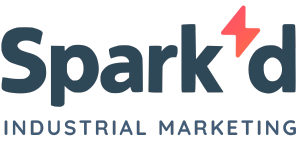A version of this blog post was originally published on MarketingOps.com, which you can read here.
The Problem with CRM "Adoption"
If your company has invested in a Contact Relationship Management (CRM) tool – whether it’s Marketo, Salesforce, HubSpot, or Zoho – then by definition it has adopted that CRM. But that doesn’t mean your organization has achieved utilization, which is the most important milestone in CRM implementation.
For the sake of our conversation, let’s establish some definitions – what do I mean by CRM adoption and utilization?
Adoption = we purchased a HubSpot subscription
Utilization = we execute these processes in HubSpot
I would wager no small amount of my salary that CRM utilization is a problem experienced by most organizations. Regardless of a business’s size, industry, customer-base, product or service offering – the challenge of CRM utilization seems pretty agnostic to all of it and shows up across the board.
Here are some stats to consider; and if you serve as your company’s CRM admin, then maybe you’ll feel validated (I certainly did):
- 63% of CRM projects fail, with 50% of those failures due to slow user adoption
- 70% of project managers expect staff to be cynical about CRM adoption
Let's say your organization comprises a highly cross-functional environment, with sales, marketing, production, engineering, estimation, quality, and customer service teams all working together to meet our customers’ needs.
With that many teams having conversations, sharing documents, and scheduling meetings with prospects, customers, and suppliers – well, the need for a CRM is a no-brainer. But even if the need is there, that's not a guarantee that your company will achieve utilization once they've added a CRM to their tech stack.
For example, let's say your organization invests in HubSpot. It comes with all the standard benefits you'd expect a CRM to have:
- Shared database of Contacts and Companies
- Email tracking and logging
- Reduced information silos
- Software automation
- Eliminated manual tasks
The list of tools, resources, and benefits that HubSpot gave us goes on and on. But no one was using it. Why?
Pivoting to a Process Optimization Methodology
Here’s my theory about CRM utilization: marketing, and maybe sales, teams are the only ones who care about it.
That’s not to say that customer service, engineering and quality teams don’t care about things like reducing information silos and eliminating super manual, redundant tasks. Of course they care about those things.
But if you want to focus strictly on the concept of CRM utilization, they do not care enough to replace a system that they are a.) currently using and b.) completely literate in to work with a CRM just for the sake of utilization. It takes time and mental calories for someone to incorporate a new system into how they do their job, and they have bigger fish to fry during their work week.
So how do you get your organization to move past adoption to full-fledged CRM utilization, especially when you as the admin know what they stand to gain by using it?
This is going to sound silly, but make them an offer they can’t refuse. In this case, I’m referring to the teams and individuals who need to be using your CRM but for all the reasons given or excuses made, they aren’t.
In my case at a previous role, the trick was identifying use cases for each stakeholder that would incentivize them enough to want a seat in the CRM.
There were fewer instances of me saying things like “HubSpot is great, here’s why you should use it” and more “I just gave built our Supplier Quality Engineer this new tool that’s totally eliminated the need to manually onboard new suppliers and get them on the Approved Vendor List; it’s totally automated now” or “Job applications don’t get lost in the shuffle anymore because of this nifty workflow I built that’s triggered when a candidate submits a job application on our website”.
In short, it became about process optimization.
Ops got on board because recruitment and onboarding processes got moved into HubSpot.
Quality got on board because supplier management processes, such as onboarding, AVL tracking and compliance documentation tracking were improved by moving them into HubSpot.
People got FOMO, or sensed there was a train with all these shortcuts and timesavers that was about to leave the station but they weren’t on board.
Leveraging process optimization is the key to unlocking utilization, and for job shops who place high value on lean operations and Continuous Improvement activities - I know this is music to your ears.
Use these best practices to capitalize on that initial interest in using your organization’s CRM and eliminate any lingering barriers to utilization.
Best Practices for Developing CRM-Driven Processes
Cut through the CRM Noise
Over-information kills utilization. Your company’s CRM is the single source of truth and central hub for information about your customers, but not all of that information is going to be relevant for each team.
Distill what matters most to each team in a tailored experience. It has to be hyper-relevant and burn as few “calories” as possible to use.
A tailored user experience is going to increase adoption. For example, creating the hiring team dashboard and boiling up the data and systems that they’re going to use most often and putting it in one place, thereby “eliminating” the rest of the CRM, in order for them to do their job in that system as efficiently as possible.
Prioritize Ease of Use or Integration
If you’re going to ask your team to execute a process from within HubSpot, then it has to be easier and more efficient than the system(s) that’s currently being used.
That being said, you don’t have to be in HubSpot to use HubSpot. If you set up the relevant integrations (i.e., browser extensions, Outlook add-ons, Zapier zaps, etc.) for your team and make sure they’ve synced their various accounts correctly, then HubSpot will still capture all the emails, calls and meetings.
It’s the win-win compromise of HubSpot being used correctly and your colleagues getting to work out of their preferred system.
Work in Versions
The company where I served as CRM admin is small enough and the list of HubSpot users was short enough that I didn't publish official updated versions or release notes for our CRM. However, I did “work in versions” when either migrating an existing process into HubSpot or building a new one in the CRM. I did this for a number of reasons.
First, since utilization is the goal, it’s easier and faster to go after low hanging fruit. I identified the bare minimum requirements to run a process in HubSpot and make that Version 1. It simplifies building the process and testing that it runs correctly, but it also helps with achieving initial utilization with team members who have never used our CRM before.
Once we’d proven out Version 1 of a HubSpot-driven process, I collaborated with the relevant teams to identify opportunities for improvement. How can we improve this process? Is anything broken, slow, or prone to silos? If Version 1 was a mirror of an existing process that we wanted to move into HubSpot, then Version 2 is the improved version of that process (again, I wouldn't move a process into HubSpot just for the sake of doing so; it needed to ultimately improve that process, otherwise the team wouldn't abandon the old system for the CRM).
Develop an Array of Training Resources
Our online HubSpot Training course was ever-evolving at my company, especially as different teams and roles become users. In addition to developing basic training content about how to set up a HubSpot account or navigate the CRM, I also created process- and use case-specific training for each team’s needs.
For example, everyone trained on the basic tutorials like “How to connect your email account to HubSpot” or “How to add HubSpot Sales tools to your Outlook”. The hiring team, though, had unique training on how to use the Deal pipeline to move an application from the Qualifying stage to the Interviewing one.
Our online CRM course was also a resource hub for other external resources. As our company’s Super Admin, I already knew where to find technical documentation, Knowledge Base articles, community forums, and Slack channels that HubSpot manages because it’s how I fixed anything that broke in our CRM or built something new. I added these resources to our HubSpot Training course and put them all in one convenient location that anyone could access. Ideally, my team became proficient in using HubSpot’s self-serve resources so they could conduct their own problem-solving and troubleshooting.
The goal should never CRM utilization, but rather CRM-driven process optimization.
Establish a routine of identifying weak processes and recognizing when a CRM can strengthen them. I’ll give you an example.
I took over all recruitment activities for a job shop, and the majority of their recruitment processes were very weak. There was zero automation, we lost track of how many applicants we had for a given job opening, we struggled with hand-offs between the recruiter and the hiring manager, there weren’t clearly defined stages of the hiring process, and follow-up tasks got lost in the shuffle.
Because I was essentially given free reign over recruitment, I used it as an opportunity to outline our various recruitment processes (i.e., job requisitions, hiring, and onboarding) and move them into our CRM, which was HubSpot. I repurposed a Deal pipeline to serve as our candidate pipeline, I set up Workflows to automate email follow-ups to the applicants and new candidate notifications to the hiring managers, and I developed Reports and Dashboards so we could measure the effectiveness of our recruitment processes and improve them.
It worked well, and the CRM-driven processes were such an improvement on our previous way of doing things that the hiring managers wanted in on the action. Boom: improved utilization across multiple teams.
When it comes to CRM utilization, companies that use a process optimization methodology won’t just see an uptick in usage; they will ultimately make their organizations work better and faster because the processes they build inside a robust CRM will yield:
- Eliminated manual tasks and data entry
- Reduced information silos and communication duplication
- Automated follow-ups, data management, and workflows




